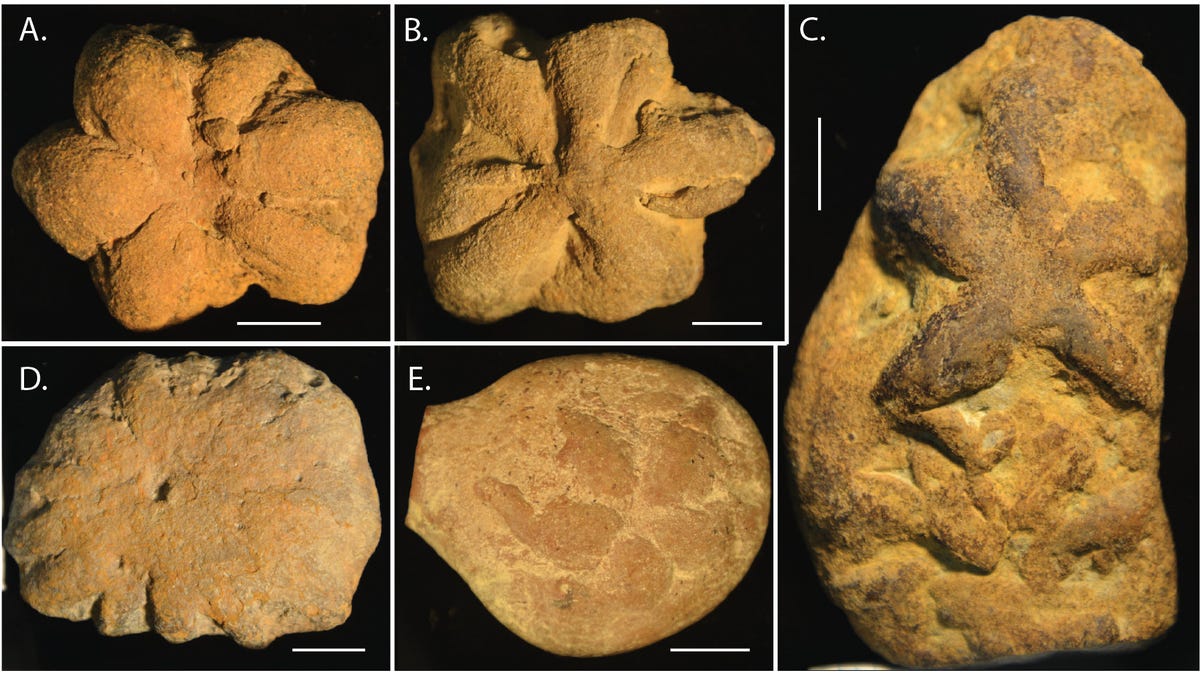These Ancient Sea Animal Fossils Aren't What They Seem, Scientists Say
At various times, researchers have thought them to be from jellyfish or sea sponges.

The shapes of these Brooksella fossils led scientists to believe they came from sea animals, but that may not be the case.
Brooksella is the name of a group of mysterious fossils dating back to around 514 million years ago. They were found in Alabama. The star-shaped fossils resemble flowers or starfish or even butter cookies. Scientists have interpreted Brooksella as various kinds of sea animals, but a new study suggests they weren't animals at all.
The story begins with Smithsonian Institute paleontologist Charles Doolittle Walcott more than 100 years ago. Walcott examined the fossils and attributed them to jellyfish. Over the decades, scientists proposed other origins for Brooksella. Perhaps they were a type of algae or shapes left by gas bubbles or -- as a team of researchers proposed in 2006 -- a kind of sea sponge.
A new analysis published in PeerJ on Friday involved studying the shape, orientation, internal structure and chemical composition of the fossils, which the paper refers to as pseudofossils, based on the researchers' conclusions.
"Brooksella intrigued me because, unlike most fossils, it had a 3D shape like a star-shaped puffed pastry that is unusual for soft-squishy animals like a sponge," said University of Georgia paleontologist Sally Walker in a PeerJ statement. "A sponge usually gets flattened like roadkill during the fossilization process -- especially a fossil more than 500 million years old!" Walker is a co-author of the new study.
The scientists found that Brooksella lacked important characteristics of sea sponges. Notably, features interpreted as canals used by sponges to filter food from water were pointing in the wrong direction -- down into the mud. Another key piece of evidence came from comparing the fossils to known nonfossil concretions from nearby rock beds. "We did not find any difference between Brooksella and the concretions, other than Brooksella had lobes and the concretions did not," the team said.
In the study, the researchers said the long history of describing and reevaluating Brooksella "highlights one of the most persistent challenges in the study of early complex life -- the difficulty of distinguishing life from non-life." These particular researchers are coming down on the side of "non-life" for these enigmatic objects. That doesn't mean the saga is over. One of the beautiful things about science is there's always room for a fresh look, and the mystery of how these distinctive shapes formed is still out there. This won't be the last we hear of Brooksella.

